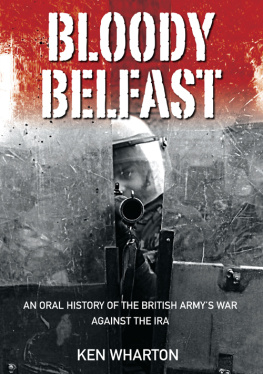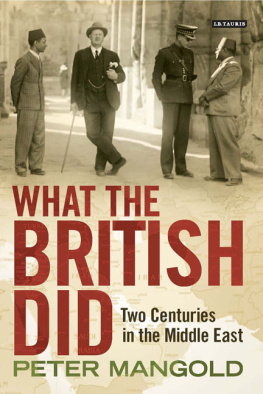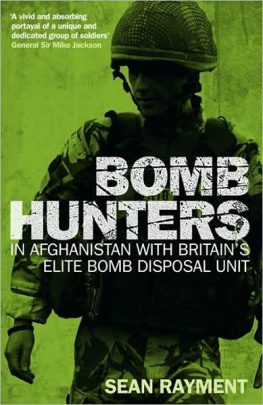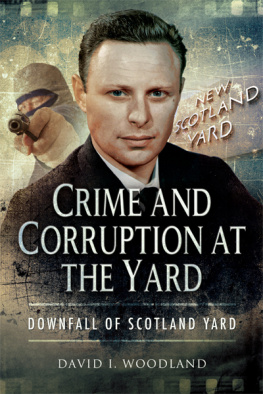PETER GURNEY was head of the Explosives Section of the Metropolitan Police Anti-Terrorist Branch until he retired in December 1991. He has two children and lives with his wife in south-east England.

Australia
HarperCollins Publishers (Australia) Pty. Ltd.
Level 13, 201 Elizabeth Street
Sydney, NSW 2000, Australia
www.harpercollins.com.au
Canada
HarperCollins Canada
2 Bloor Street East - 20th Floor
Toronto, ON, M4W, 1A8, Canada
www.harpercollins.ca
New Zealand
HarperCollins Publishers (New Zealand) Limited
P.O. Box 1
Auckland, New Zealand
www.harpercollins.co.nz
United Kingdom
HarperCollins Publishers Ltd.
1 London Bridge Street
London SE1 9GF
www.harpercollins.co.uk
United States
HarperCollins Publishers Inc.
195 Broadway
New York, NY 10007
www.harpercollins.com
The author wishes to express his thanks to: Howard Reynolds, without whom this book would not have been written; my wife, Sheridan, who, despite my denials, insisted my life was of interest to others; Sir David Nicholas, Terry Spooner and the Press Association for their immeasurable assistance; Val Hudson and Karen Whitlock at HarperCollins, and Don Short, who not only believed I had a book, but proved it.
There would have been no reason to target Farmer Bowkers bicycle had Farmer Bowker not gone on the attack first. Shooting people just for pinching a few apples was a bit much. It wasnt as if anyone had been doing anything seriously wrong.
Jimmy and I had gone in quietly, carefully, weaving this way and that amongst the fruit trees. The essence of scrumping was speed: you picked the apples as quickly as you could then stuffed them inside your open-necked shirt; your trouser belt or waistband prevented them from falling out. When the front of your shirt was full, you pushed the apples around to your back, then filled the front again. Jimmy and I prided ourselves on our expertise but when wed completed our harvest Farmer Bowker suddenly materialized, shouting, and brandishing a twelve-bore.
Running away isnt easy when you look like a Michelin Man; somehow we made it back to the boundary, bouncing and ballooning along until we reached the old wooden fence. We were astride the crosspiece when the shotgun blast split the air and pellets from the cartridge actually peppered the backs of our shirts and the apples within.
It was, we later agreed, an act of war. For honour to be satisfied some response would have to be made. Unfortunately when youre eleven years old your options for wreaking vengeance on a rural warlord are limited. So we decided to attach some rockets to Farmer Bowkers bicycle, fire them, and send the contraption hurtling across the countryside.
The idea was mooted at a council of war called in Stewart Smiths garden shed. We were, in the main, children of the camp; army kids whose home, Netheravon, housed the Small Arms School. To the north, the camp was bounded by the Salisbury-Netheravon road. Accommodation consisted of two terraces of brick-built houses, one brick-built detached, and a long row of corrugated iron huts (which, according to my mother, constituted the most uncomfortable married quarters in Britain). The operational centre lay to the east of the married quarters area. To the south stood the ammunition storage zone on ground which shelved gradually away towards the banks of the River Avon.
The camp took its name from the Wiltshire village a mile and a half away. Salisbury Plain, the vast swathe of chalk downs, spread out all around, westwards to Warminster and Westbury, north towards Devizes and the Vale of Pewsey, east towards Andover and south to Amesbury and Stonehenge. It was a wide landscape, and an ancient landscape, and a perfect place to launch a rocket-propelled bicycle.
As befitted children of military households, the operation unfolded with military precision. Intelligence was vital. The girls came in useful here: a small group of them set about a discreet surveillance of Farmer Bowker. In the meantime we attended to the fine detail. The calculation of velocities and payloads was, to us, not an unfamiliar activity. This was an era when boys usually spent their time assembling complete sets of Turf cigarette cards, albums of exotic stamps and lists of Black Five engine numbers; our interests lay elsewhere.
In my case, a preoccupation with bombs and rockets was an inevitable consequence of growing up in Netheravon. Safety procedures, though learned by heart by everyone on the camp, were rarely observed: unused ammunition was frequently left behind after training in the weapons pits. To a small boy the discovery of abandoned .303 cartridges was akin to finding El Dorado; I would break them open, extract the cordite, and use this to manufacture bangers, crackers and rockets.
More useful skills were also acquired, including the accurate recognition of blind 2-inch mortar illuminating bombs (a blind is the term for any filled projectile that is, one containing high explosive, smoke or illuminating composition which has failed to function as intended on impact or arrival at the target). The mortar illuminating bombs contained a flare attached to a parachute; when functioning correctly, the flare would ignite and was ejected at the apex of the bombs trajectory. Suspended from the parachute, the flare would then descend gently to earth. The parachutes were much sought after by camp children for their high barter value; even adults found uses for the cotton fabric.
But this type of munition had a high failure rate: bombs frequently fell back to earth with flare and parachute still intact because of malfunctions of the ignition and ejection system. If you knew where to look you could soon find them, for although the bombs usually buried themselves in the ground, their tail units remained visible. To a child this was a valuable but potentially deadly harvest: many hours of careful study were needed to learn the difference between useless smoke bombs, the much-prized illuminating bombs, and the lethal unexploded HE (high explosive) bombs.
As time went by I progressed to larger and deadlier bombs and became adept at removing the safety mechanisms from the fuzes of various projectiles so that they would explode when dropped on to hard ground (usually by suspending a prepared bomb from a piece of rope and then arranging for the rope to burn through).
My confidence grew, but others, particularly my mother, were not so sanguine: relaxing quietly one evening at home, she heard a heavy thump from my bedroom, hastened to investigate, and discovered me sitting on my bed practising catches with a Mills hand grenade.
Peter! What on earth dyou think youre doing?
Me? I stared blankly. Im not doing anything. I was just throwing this up and down.
But its a hand grenade!
I know. Realization dawned belatedly. Oh. Sorry about the noise. I just dropped it.
You just dropped it?
Its all right, its not dangerous or anything. I smiled the smile that children display to reassure adults ignorant of the finer points of modern technology. Look, you can see its empty
By way of confirmation, I began to unscrew the bottom of the grenade, certain that this informative demonstration would calm as well as clarify.
Stop it! Mother moved nearer, angry now. Get this thing out of here right now! I am not having a hand grenade going off in my married quarters.
I took the grenade away and reflected, not for the first time, that though parents were all right, they were not a lot of fun.
Fun, of course, was what life was all about, and explosions were caused for the sheer joy of it; it was not our intention to harm either people or property. This meant we couldnt risk hurting Farmer Bowker, and we decided to concentrate our attention on his bicycle.
Next page











